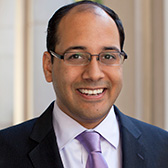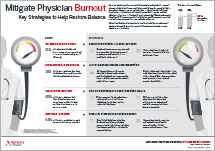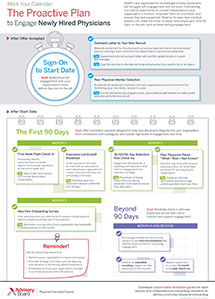Auto logout in seconds.
Continue LogoutRead Advisory Board's take: How to improve the EMR to alleviate burnout
EHRs are supposed to make doctors' workdays easier, but instead, they've brought us to "a point where people in the medical profession actively, viscerally, volubly hate their computers," Atul Gawande writes in the New Yorker.
A tech-savvy doc meets his match
Over 90% of U.S. hospitals have implemented EHRs in the past decade, according to Gawande. And the implementation has taken a toll on doctors.
It's been three years since Gawande went through an EHR implementation at his own hospital, and in that time, Gawande says that he's "come to feel that a system that promised to increase my mastery over my work has, instead, increased my work's mastery over me."
He's not alone. A 2016 study found that, for every hour a physician spent face-to-face with a patient, they spent around two hours doing computer work—which, Gawande writes is not what doctors want.
To illustrate his point, Gawande profiles Susan Sadoughi, a primary care physician at Brigham and Women's Hospital. Initially, Sadoughi was optimistic about the potential for the EHR system to streamline care for her patients, but that optimism has long faded, Gawande writes. Now, she feels that the EHR has made things worse, causing her to bring work home and spend at least an hour on her computer every night.
Sadoughi's extra workload stems from inefficiencies within the system, Gawande writes. Take for instance patients' "problem lists," which Sadoughi uses to track patients' medical issues. Before the new EHR system, Sadoughi controlled the entries on the list. Now everyone in her organization can edit a patient's problem list. Often, different providers will list the same diagnosis in different ways, or they'll list a generic symptom for every patient. "They're long, they're deficient, they're redundant," Sadoughi said.
How EHRs treat doctors' notes can be another source of frustration. In the past, handwritten doctors' notes were short and to the point, but the current shortcut for EHRs is to "paste in whole blocks of information—an entire two-page imaging report, say—rather than selecting the relevant details," Gawande writes. This leaves other doctors with the task of sorting through pages of information to find what's important.
EHRs have also contributed to physician burnout rates, Gawande writes. As the average workday has grown, so has the prevalence of burnout. A study from the University of Wisconsin found that the average workday for family physicians has increased to 11.5 hours, and levels of burnout have reached "epidemic levels," Gawande writes, with 40% of physicians screening positive for depression and 7% reporting suicidal thinking.
An analysis from Mayo Clinic found that one of the strongest predictors of burnout was how much time a provider spent doing computer work.
The advent of EHRs has also changed the way people work together, Gawande writes. People are "more disconnected; less likely to see and help one another, and often less able to."
'It is for the patients'
Gregg Meyer, chief clinical officer for Partners HealthCare, said he sympathizes with the doctors' complaints about EHRs but doesn't apologize for implementing it. "[W]e think of this system as a system for us and it's not," he said. "It is for the patients."
Patients are able to log into their EHR where they can look at lab results or remind themselves of what medications their supposed to take and how often. It's allowed "clinicians to help patients in ways that hadn't been possible before," Gawande writes.
It's also improved providers' abilities to spot trends in records or identify potentially at-risk patients. For example, at Partners, providers can scan EHRs to see which patients have been on opioids for over three months and may be at risk of misuse or overdose. Partners has also started identifying which patients have been diagnosed with high-risk diseases but haven't received treatment.
How providers are adjusting
One way providers are adjusting to EHR implementation is through medical scribes, who work along with physicians to take care of some of their computer work, Gawande writes. Within the past year, Massachusetts General Hospital has begun using a "virtual scribe" service, in which doctors based in India listen to digitally-recorded patient visits and do documentation.
A 2015 study found that two-thirds of doctors said they "liked" or even "loved" having a scribe. However, the study found having a scribe didn't change their job satisfaction or workload, it just meant they saw more patients.
Others have tinkered with ways to improve their EHRs, Gawande writes. Neil Malhotra, a neurosurgeon at the University of Pennsylvania, alongside Judy Thornton, a software analyst from Penn's I.T. department, meet weekly with the entire neurosurgery department to try to reimagine how their ideal EHR system would work.
Not long after the meetings began, Malhotra and his colleagues were able to remove inefficient functions from the EHR and add new ones, creating a faster, easier-to-use interface specifically designed for neurosurgery visits, Gawande writes.
'They have to know me'
Gawande shares his own experience with EHRs and patient interactions, writing about a visit he had with a patient named John Cameron, a construction supervisor whom another doctor sent to Gawande for further evaluation.
During the visit with Cameron, Gawande had to enter information into the computer. "He watched me silently click one tab after another," Gawande writes.
In another appointment, Gawande asked Cameron if he'd noticed how much time Gawande had spent on his computer. "Yes, absolutely," Cameron said. "I've been in your situation. I knew you were just trying to find the information you needed. I was actually trying not to talk too much, because I knew you were in a hurry, but I needed you to look the information up."
Cameron said he'd encountered a similar dilemma in his own line of work. To cope, he said requires everyone working on his job site to "go through a one-hour orientation with me." He shared, "I have to know these guys personally. They have to know me. Millions of years human beings evolved to look at each other in the face, to use facial expression to create connection."
Gawande said he was struck by Cameron's acceptance of competing human and computer needs. He writes, "We can only insure that people always have the ability to turn away from their screens and see each other, colleague to colleague, clinician to patient, face to face" (Gawande, New Yorker, 11/12).
Advisory Board's take

Hamza Hasan, Practice Manager, Medical Group Strategy Council
Atul Gawande's latest work in the New Yorker is a timely reminder of the importance of tackling physician burnout. As is now well-known, the American physician workforce is under tremendous stress, with over half of physicians in the United States identifying as burned out. While much has been written about what's contributing to this burnout, Dr. Gawande has highlighted one of the most critical factors: the usage of the EMR.
“In many practices, EMRs have simply amplified already broken workflows and processes.”
While EMRs continue to hold significant promise in the form of improved data analytics, many physicians across the country continue to struggle with their use and feel they spend too much of their time practicing "desktop medicine." One study found that today's physicians spend more than twice as much time looking at screens than they do working with patients. And, in many practices, according to our research, EMRs have simply amplified already broken workflows and processes.
Physician leaders must continue to make burnout prevention a priority and can do so by giving frontline physicians an opportunity to voice their concerns. But they should not forget the important role of the EMR in burnout. To address this, they should make a concerted effort to improve ambulatory workflows, ranging from creating customized EMR training programs, to further investing in improving staffing protocols and care team use.
To discover the six strategies we've identified to alleviate the EMR's growing burden on physician practice, be sure to download the Medical Group Leader's EMR Optimization Playbook. The report will walk you through implementation of these strategies, weigh in on tactics like scribes and voice-recognition technology, and offer case profiles of medical groups who have been able to move the needle of improving their EMR and reducing burnout.
Don't miss out on the latest Advisory Board insights
Create your free account to access 1 resource, including the latest research and webinars.
Want access without creating an account?
You have 1 free members-only resource remaining this month.
1 free members-only resources remaining
1 free members-only resources remaining
You've reached your limit of free insights
Become a member to access all of Advisory Board's resources, events, and experts
Never miss out on the latest innovative health care content tailored to you.
Benefits include:
You've reached your limit of free insights
Become a member to access all of Advisory Board's resources, events, and experts
Never miss out on the latest innovative health care content tailored to you.
Benefits include:
This content is available through your Curated Research partnership with Advisory Board. Click on ‘view this resource’ to read the full piece
Email ask@advisory.com to learn more
Click on ‘Become a Member’ to learn about the benefits of a Full-Access partnership with Advisory Board
Never miss out on the latest innovative health care content tailored to you.
Benefits Include:
This is for members only. Learn more.
Click on ‘Become a Member’ to learn about the benefits of a Full-Access partnership with Advisory Board
Never miss out on the latest innovative health care content tailored to you.


